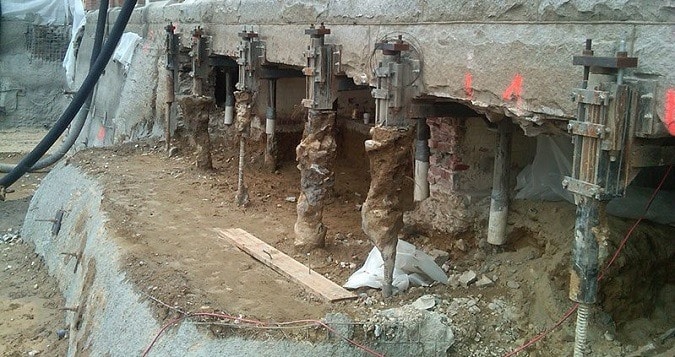Foundations are among the most essential parts of building any house or structure, serving to transfer its weight onto the earth while helping prevent moisture issues like mold and mildew growth.
There is a wide variety of foundation types and construction systems from which you can choose, making research essential in selecting one which will meet the climate, building design and cost considerations of your environment. Know more about Underpinning Melbourne.
Shallow Foundations
Shallow foundations are ideal for buildings requiring low loads, being more economical and better for the environment by disturbing less ground. Furthermore, shallow foundations may be suitable for soil conditions where compression would render deeper foundations unsuitable – for instance where there may be compressible soil conditions where deeper ones would not.
Distribute structural loads over an expansive area at shallow depth beneath ground or plinth level, ideal for buildings without any lateral load on their walls.
Construction time for these footings can be relatively brief and they’re easy to inspect; you can choose either random rubble masonry or reinforced concrete materials for their construction, which allows for increased loads to be accommodated without needing separate strip or combined footings.
Deep Foundations
Deep foundations may be necessary if soil bearing capacity near the surface cannot adequately withstand an estimated load for a structure, or when mat or raft foundations are uneconomical; deep foundations transfer loads to deeper strata via either skin friction or end bearing, providing support.
These structures include piles, pier shafts and caissons; piles are by far the most frequently employed option – prefabricated piles can be driven into place with a screw piling rig for quick installation.
An experienced screw piling expert in Newcastle will know which pile type will be suitable for a project, depending on subsurface conditions, building loads, risk tolerances and project specifications. They’ll also offer guidance as to the optimal depth for your piles – this ensures their longevity!
Individual Footings
Individual footings are used to support and disperse point loads such as those from columns or pillars, making them the most commonly used shallow foundation type. Easy to construct out of concrete or steel, isolated footings are typically the best choice when soil bearing capacity is high but superstructure loading capacity is low1.
Other types of shallow foundations include pad footings (also referred to as spread or open footings) & strip footings, both consisting of small concrete pads that support one column while strip footings use larger concrete slabs that accommodate multiple columns, supporting multiple loads at once. Raft foundations use large basement floor slabs to transfer loads directly onto the earth surface.
Grillage foundations are constructed to transfer structural loads from columns onto a hard rock stratum underground, making them an excellent alternative to deep foundations in situations with limited excavation depths.
Slab Foundations
A slab foundation consists of one layer of concrete poured directly on the ground. This requires less site preparation and usually costs less to construct than its t-foundation counterpart, yet remains susceptible to frost and heave.
If your soil drains well, this type of foundation could work perfectly for you. But it’s important to take into account how erosion might alter its performance over time; if erosion causes sinkholes on the property due to sinkhole erosion, additional piers may need to be installed to support it. Also keep in mind that slab foundations lack crawl spaces or can’t easily be raised up against flooding or freezing water – making them unsuitable in northern climates. After carefully considering all the advantages and disadvantages of each foundation type, select one suitable for your home!
Crawl Spaces
Selecting an appropriate foundation can have a considerable impact on resale value of any new home, and should take into account factors like region. Is the area flat or vulnerable to flooding or earthquakes, is there moisture present that encourages insect infestation, or does it feature dry climate characteristics that prevent these?
Crawl space foundations are popular in humid climates, yet can be more costly to construct due to moisture issues and require special protection from humidity with vapor barriers and air conditioning to keep the space dry – both of which add significantly to construction costs.
As pipes, wiring, and ductwork in crawl spaces are easily accessible for maintenance or replacement when necessary, they may make more appealing options for some homeowners; but others might prefer a cleaner look with less visible wiring or ductwork.

